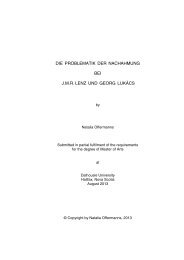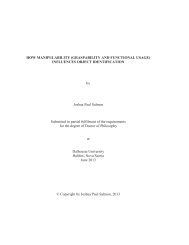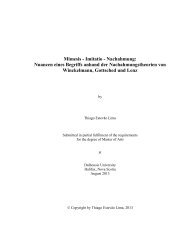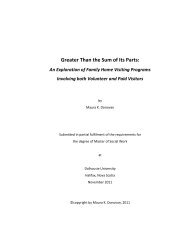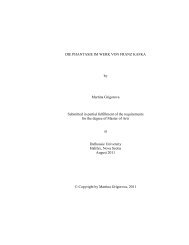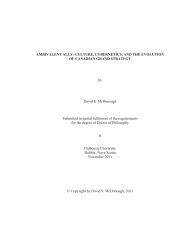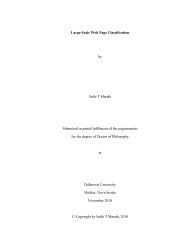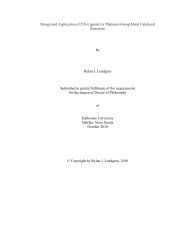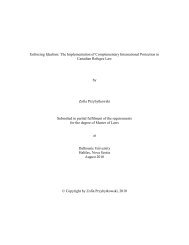ADAPTING TRISTRAM SHANDY by Adria Young Submitted in ...
ADAPTING TRISTRAM SHANDY by Adria Young Submitted in ...
ADAPTING TRISTRAM SHANDY by Adria Young Submitted in ...
Create successful ePaper yourself
Turn your PDF publications into a flip-book with our unique Google optimized e-Paper software.
transfers, or streaml<strong>in</strong>e the text for the purpose of a cohesive, conventional dramatic<br />
narrative. This approach is common of most literary adaptations, regardless of the period,<br />
which ranges from TV versions of Homer's Odyssey to Sense and Sensibility (Lee 1995).<br />
Adaptations like these encourage the fidelity approach <strong>in</strong> adaptation criticism<br />
because of the extent to which they are concerned with recreat<strong>in</strong>g the text and its<br />
historical contexts as closely as possible. When film-makers take this approach, both<br />
film-makers and critics privilege the literature over the c<strong>in</strong>ematic work (Mayer 4), and<br />
consequently ignore the <strong>in</strong>novations made to the text through film. Imelda Whelehan<br />
argues that “heritage films” attempt to present “historical veracity and authenticity” first<br />
and foremost, and often focus on the portrayal and development of characters rather than<br />
themes (8); The Duchess (2008) based on Amanda Foreman's biography of Georgiana<br />
Cavendish is an apt example. The critical result is an evaluation of the film based on<br />
subjective taste: to what extent did the film represent my <strong>in</strong>terpretation of the text? How<br />
successful was the adaptation <strong>in</strong> captur<strong>in</strong>g my understand<strong>in</strong>g of the characters? Because<br />
of this, Brian McFarlane argues, fidelity criticism is a “doomed enterprise” and an<br />
“unillum<strong>in</strong>at<strong>in</strong>g” theoretical approach (9). Moreover, fidelity criticism depends upon a<br />
“notion” of the text as hold<strong>in</strong>g a “s<strong>in</strong>gle, correct 'mean<strong>in</strong>g,' which the film-maker has<br />
either adhered to or <strong>in</strong> some sense violated or tampered with” (McFarlane 8). And this<br />
sense of 'violation' or 'tamper<strong>in</strong>g,' which Hutcheon notes are common terms used to<br />
describe literary adaptations (Hutcheon 3), devalue a film’s attempt to <strong>in</strong>terpret a new<br />
understand<strong>in</strong>g and create a re-presentation of the text that goes beyond (Kenneth<br />
Branagh's many Shakespearean) literary reproductions. 79 By that I mean: fidelity<br />
criticism as an evaluative pr<strong>in</strong>ciple limits the ways <strong>in</strong> which a film adaptation can be<br />
62



